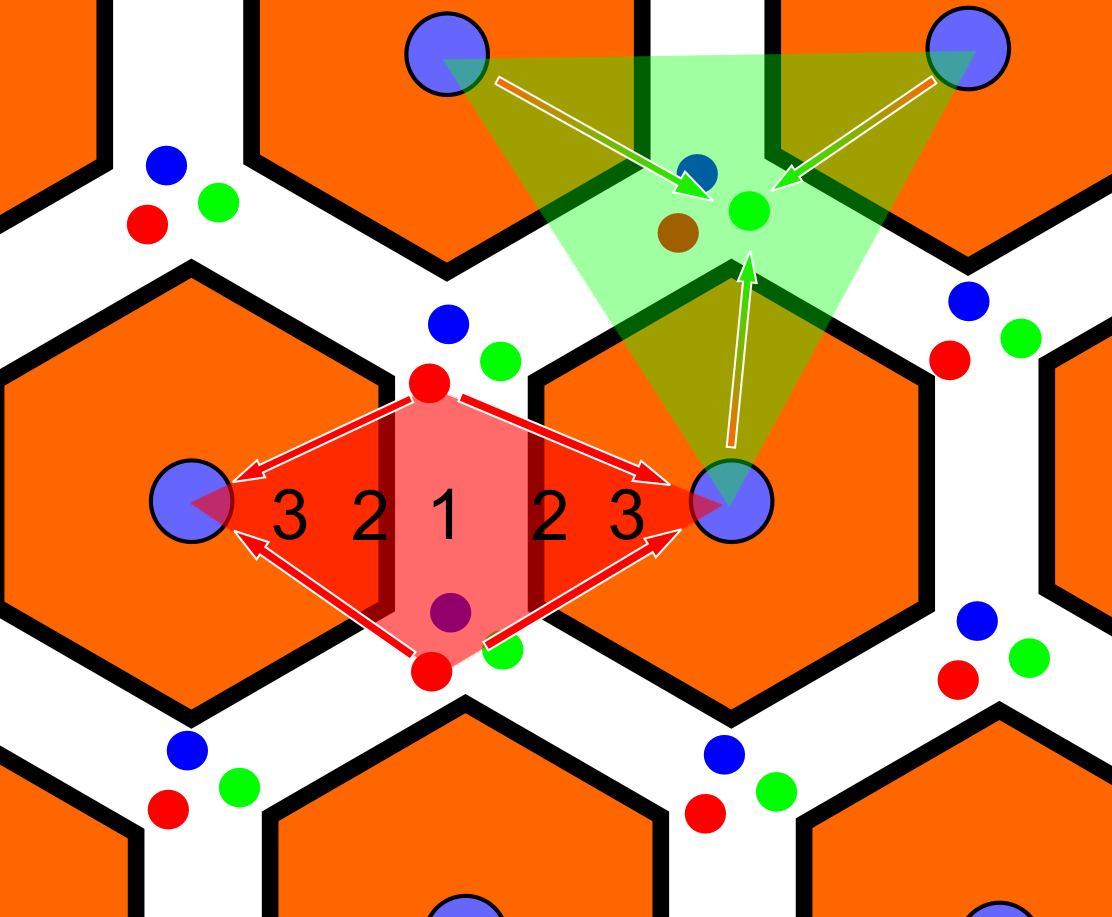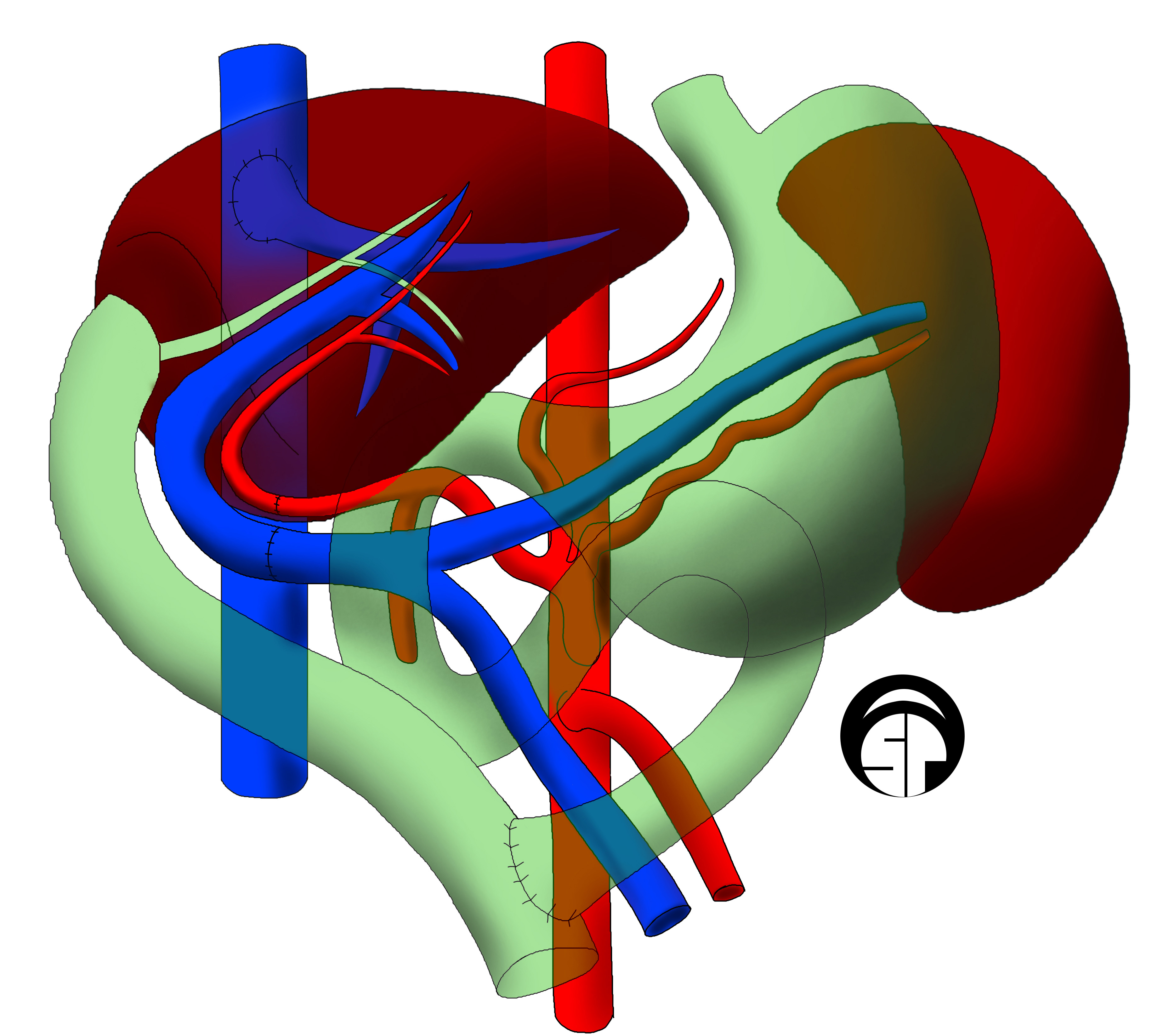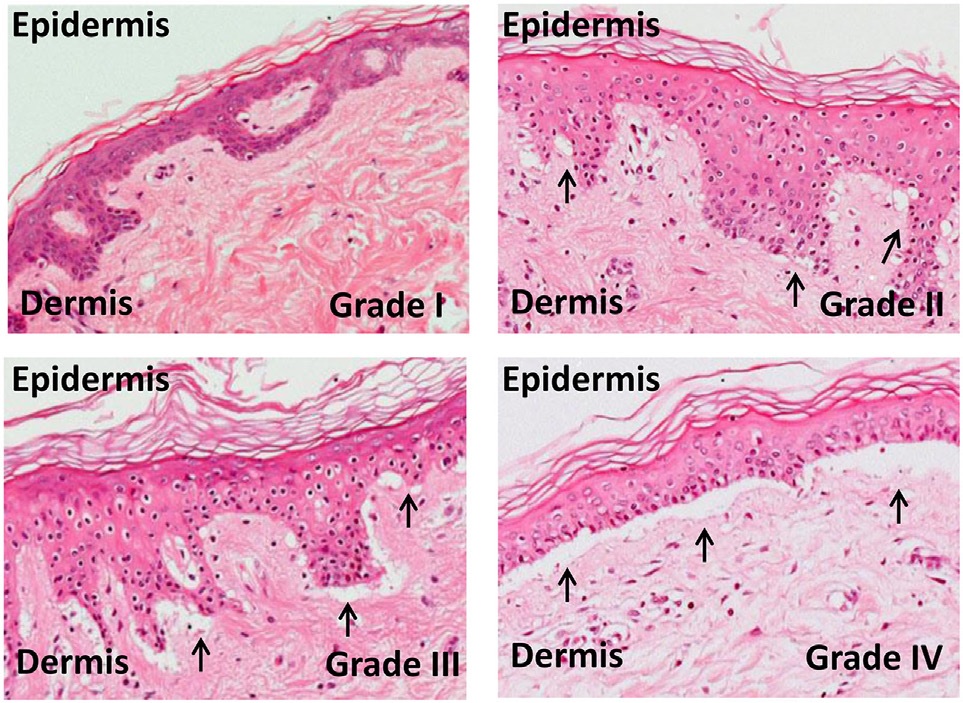|
Ductopenia
Ductopenia refers to a reduction in the number of ducts in an organ, in particular the absence of bile ducts of the expected size in the portal tract of the liver. It is the histological hallmark of vanishing bile duct syndrome (typically <0.5 s per ). The most common cause of ductopenia is . Other causes of ductopenia include failing , |
Vanishing Bile Duct Syndrome
Vanishing bile duct syndrome is a loose collection of diseases which leads to the injury to hepatic bile ducts and eventual ductopenia. Signs and symptoms The presentation is dependent upon the underlying cause. The course can be rapid or chronic. * Fatigue * Anorexia * Abdominal pain * Weight loss * Pruritus * Hyperlipidemia * Malabsorption * Fat-soluble vitamin deficiencies * Elevated alkaline phosphatase * Elevated gamma-glutamyltransferase * Elevated conjugated bilirubin Cause Congenital In fetal and neonatal life the ductal plates are remodeled. The malformations can be atretic or fibrocystic. Atretic causes * Intrahepatic bile duct atresia (Alagille syndrome) (ALGS2 MIM:610205 and ALGS1 MIM:118450) * Extrahepatic bile duct atresia Fibrocystic causes * Autosomal recessive polycystic kidney disease * Congential hepatic fibrosis * Caroli's disease * Von Meyenburg complex Chromosomal associations * Trisomy 17, 18 and 21 Genetic associations * Cystic fibrosis * Alpha 1 ... [...More Info...] [...Related Items...] OR: [Wikipedia] [Google] [Baidu] |
Duct (anatomy)
In anatomy and physiology, a duct is a circumscribed channel leading from an exocrine gland or organ. Types of ducts Examples include: Duct system As ducts travel from the acinus which generates the fluid to the target, the ducts become larger and the epithelium becomes thicker. The parts of the system are classified as follows: Some sources consider "lobar" ducts to be the same as "interlobar ducts", while others consider lobar ducts to be larger and more distal from the acinus. For sources that make the distinction, the interlobar ducts are more likely to classified with simple columnar epithelium (or pseudostratified epithelium), reserving the stratified columnar for the lobar ducts. File:Gray1025.png, Section of submaxillary gland of kitten. Duct semidiagrammatic. X 200. File:Gray1173.png, Section of portion of mamma. Intercalated duct The intercalated duct, also called intercalary duct (ducts of Boll), is the portion of an exocrine gland leading directly from th ... [...More Info...] [...Related Items...] OR: [Wikipedia] [Google] [Baidu] |
Organ (anatomy)
In biology, an organ is a collection of tissues joined in a structural unit to serve a common function. In the hierarchy of life, an organ lies between tissue and an organ system. Tissues are formed from same type cells to act together in a function. Tissues of different types combine to form an organ which has a specific function. The intestinal wall for example is formed by epithelial tissue and smooth muscle tissue. Two or more organs working together in the execution of a specific body function form an organ system, also called a biological system or body system. An organ's tissues can be broadly categorized as parenchyma, the functional tissue, and stroma, the structural tissue with supportive, connective, or ancillary functions. For example, the gland's tissue that makes the hormones is the parenchyma, whereas the stroma includes the nerves that innervate the parenchyma, the blood vessels that oxygenate and nourish it and carry away its metabolic wastes, and the con ... [...More Info...] [...Related Items...] OR: [Wikipedia] [Google] [Baidu] |
Bile Duct
A bile duct is any of a number of long tube-like structures that carry bile, and is present in most vertebrates. Bile is required for the digestion of food and is secreted by the liver into passages that carry bile toward the hepatic duct. It joins the cystic duct (carrying bile to and from the gallbladder) to form the common bile duct which then opens into the intestine. Structure The top half of the common bile duct is associated with the liver, while the bottom half of the common bile duct is associated with the pancreas, through which it passes on its way to the intestine. It opens into the part of the intestine called the duodenum via the ampulla of Vater. Segments The biliary tree (see below) is the whole network of various sized ducts branching through the liver. The path is as follows: Bile canaliculi → Canals of Hering → interlobular bile ducts → intrahepatic bile ducts → left and right hepatic ducts ''merge to form'' → common hepatic duct ''exits live ... [...More Info...] [...Related Items...] OR: [Wikipedia] [Google] [Baidu] |
Portal Triad
In histology (microscopic anatomy), the lobules of liver, or hepatic lobules, are small divisions of the liver defined at the microscopic scale. The hepatic lobule is a building block of the liver tissue, consisting of a portal triad, hepatocytes arranged in linear cords between a capillary network, and a central vein. Lobules are different from the lobes of liver: they are the smaller divisions of the lobes. The two-dimensional microarchitecture of the liver can be viewed from different perspectives: The term "hepatic lobule", without qualification, typically refers to the classical lobule. Structure The hepatic lobule can be described in terms of metabolic "zones", describing the hepatic acinus (terminal acinus). Each zone is centered on the line connecting two portal triads and extends outwards to the two adjacent central veins. The periportal zone I is nearest to the entering vascular supply and receives the most oxygenated blood, making it least sensitive to ischemic i ... [...More Info...] [...Related Items...] OR: [Wikipedia] [Google] [Baidu] |
Primary Biliary Cirrhosis
Primary biliary cholangitis (PBC), previously known as primary biliary cirrhosis, is an autoimmune disease of the liver. It results from a slow, progressive destruction of the small bile ducts of the liver, causing bile and other toxins to build up in the liver, a condition called cholestasis. Further slow damage to the liver tissue can lead to scarring, fibrosis, and eventually cirrhosis. Common symptoms are tiredness, itching, and in more advanced cases, jaundice. In early cases, the only changes may be those seen in blood tests. PBC is a relatively rare disease, affecting up to one in 3,000–4,000 people. It is much more common in women, with a sex ratio of at least 9:1 female to male. The condition has been recognised since at least 1851, and was named "primary biliary cirrhosis" in 1949. Because cirrhosis is a feature only of advanced disease, a change of its name to "primary biliary cholangitis" was proposed by patient advocacy groups in 2014. Signs and symptoms Pe ... [...More Info...] [...Related Items...] OR: [Wikipedia] [Google] [Baidu] |
Liver Transplantation
Liver transplantation or hepatic transplantation is the replacement of a diseased liver with the healthy liver from another person (allograft). Liver transplantation is a treatment option for end-stage liver disease and acute liver failure, although availability of donor organs is a major limitation. The most common technique is orthotopic transplantation, in which the native liver is removed and replaced by the donor organ in the same anatomic position as the original liver. The surgical procedure is complex, requiring careful harvest of the donor organ and meticulous implantation into the recipient. Liver transplantation is highly regulated, and only performed at designated transplant medical centers by highly trained transplant physicians and supporting medical team. The duration of the surgery ranges from 4 to 18 hours depending on outcome. Favorable outcomes require careful screening for eligible recipient, as well as a well-calibrated live or cadaveric donor match. Medic ... [...More Info...] [...Related Items...] OR: [Wikipedia] [Google] [Baidu] |
Hodgkin's Lymphoma
Hodgkin lymphoma (HL) is a type of lymphoma, in which cancer originates from a specific type of white blood cell called lymphocytes, where multinucleated Reed–Sternberg cells (RS cells) are present in the patient's lymph nodes. The condition was named after the English physician Thomas Hodgkin, who first described it in 1832. Symptoms may include fever, night sweats, and weight loss. Often, nonpainful enlarged lymph nodes occur in the neck, under the arm, or in the groin. Those affected may feel tired or be itchy. The two major types of Hodgkin lymphoma are classic Hodgkin lymphoma and nodular lymphocyte-predominant Hodgkin lymphoma. About half of cases of Hodgkin lymphoma are due to Epstein–Barr virus (EBV) and these are generally the classic form. Other risk factors include a family history of the condition and having HIV/AIDS. Diagnosis is conducted by confirming the presence of cancer and identifying RS cells in lymph node biopsies. The virus-positive cases are classified ... [...More Info...] [...Related Items...] OR: [Wikipedia] [Google] [Baidu] |
Graft-versus-host Disease
Graft-versus-host disease (GvHD) is a syndrome, characterized by inflammation in different organs. GvHD is commonly associated with bone marrow transplants and stem cell transplants. White blood cells of the donor's immune system which remain within the donated tissue (the graft) recognize the recipient (the host) as foreign (non-self). The white blood cells present within the transplanted tissue then attack the recipient's body's cells, which leads to GvHD. This should not be confused with a transplant rejection, which occurs when the immune system of the transplant recipient rejects the transplanted tissue; GvHD occurs when the donor's immune system's white blood cells reject the recipient. The underlying principle (alloimmunity) is the same, but the details and course may differ. GvHD can also occur after a blood transfusion if the blood products used have not been irradiated or treated with an approved pathogen reduction system. Types In the clinical setting, graft-versus-hos ... [...More Info...] [...Related Items...] OR: [Wikipedia] [Google] [Baidu] |
Human Cytomegalovirus
''Human betaherpesvirus 5'', also called human cytomegalovirus (HCMV), is species of virus in the genus ''Cytomegalovirus'', which in turn is a member of the viral family known as ''Herpesviridae'' or herpesviruses. It is also commonly called CMV. Within ''Herpesviridae'', HCMV belongs to the ''Betaherpesvirinae'' subfamily, which also includes cytomegaloviruses from other mammals. CMV is a double-stranded DNA virus. Although they may be found throughout the body, HCMV infections are frequently associated with the salivary glands. HCMV infection is typically unnoticed in healthy people, but can be life-threatening for the immunocompromised, such as HIV-infected persons, organ transplant recipients, or newborn infants. Congenital cytomegalovirus infection can lead to significant morbidity and even death. After infection, HCMV remains latent within the body throughout life and can be reactivated at any time. Eventually, it may cause mucoepidermoid carcinoma and possibly other m ... [...More Info...] [...Related Items...] OR: [Wikipedia] [Google] [Baidu] |
Lethal Dose
In toxicology, the lethal dose (LD) is an indication of the lethal toxicity of a given substance or type of radiation. Because resistance varies from one individual to another, the "lethal dose" represents a dose (usually recorded as dose per kilogram of subject body weight) at which a given ''percentage'' of subjects will die. The lethal concentration is a lethal dose measurement used for gases or particulates. The LD may be based on the standard person concept, a theoretical individual that has perfectly "normal" characteristics, and thus not apply to all sub-populations. Median lethal dose (LD50) The median lethal dose, LD50 (abbreviation for "lethal dose, 50%"), LC50 (lethal concentration, 50%) or LCt50 (lethal concentration and time) of a toxin, radiation, or pathogen is the dose required to kill half the members of a tested population after a specified test duration. LD50 figures are frequently used as a general indicator of a substance's acute toxicity. A lower LD50 is indi ... [...More Info...] [...Related Items...] OR: [Wikipedia] [Google] [Baidu] |
Phenothiazines
Phenothiazine, abbreviated PTZ, is an organic compound that has the formula S(C6H4)2NH and is related to the thiazine-class of heterocyclic compounds. Derivatives of phenothiazine are highly bioactive and have widespread use and rich history. The derivatives chlorpromazine and promethazine revolutionized the fields of psychiatry and allergy treatment, respectively. An earlier derivative, methylene blue, was one of the first antimalarial drugs, and derivatives are under investigation as possible anti-infective drugs. Phenothiazine is a prototypical pharmaceutical lead structure in medicinal chemistry. Uses Phenothiazine itself is only of theoretical interest, but its derivatives revolutionized psychiatry, other fields of medicine, and pest management. Other derivatives have been studied for possible use in advanced batteries and fuel cells. Phenothiazine-derived drugs In 1876, methylene blue, a derivative of phenothiazine, was synthesized by Heinrich Caro at BASF. The struc ... [...More Info...] [...Related Items...] OR: [Wikipedia] [Google] [Baidu] |



_mixed_cellulary_type.jpg)
